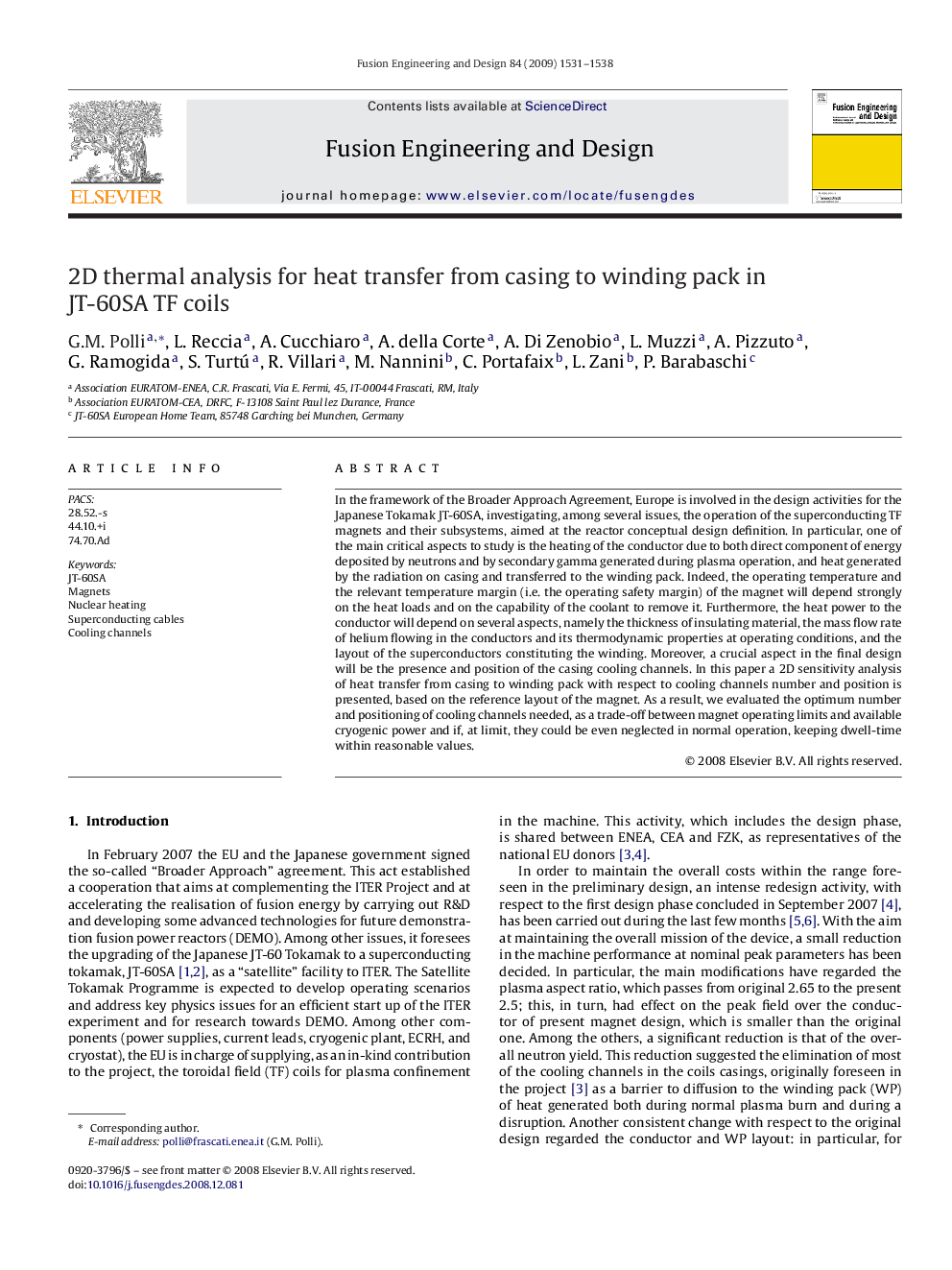| Article ID | Journal | Published Year | Pages | File Type |
|---|---|---|---|---|
| 273185 | Fusion Engineering and Design | 2009 | 8 Pages |
In the framework of the Broader Approach Agreement, Europe is involved in the design activities for the Japanese Tokamak JT-60SA, investigating, among several issues, the operation of the superconducting TF magnets and their subsystems, aimed at the reactor conceptual design definition. In particular, one of the main critical aspects to study is the heating of the conductor due to both direct component of energy deposited by neutrons and by secondary gamma generated during plasma operation, and heat generated by the radiation on casing and transferred to the winding pack. Indeed, the operating temperature and the relevant temperature margin (i.e. the operating safety margin) of the magnet will depend strongly on the heat loads and on the capability of the coolant to remove it. Furthermore, the heat power to the conductor will depend on several aspects, namely the thickness of insulating material, the mass flow rate of helium flowing in the conductors and its thermodynamic properties at operating conditions, and the layout of the superconductors constituting the winding. Moreover, a crucial aspect in the final design will be the presence and position of the casing cooling channels. In this paper a 2D sensitivity analysis of heat transfer from casing to winding pack with respect to cooling channels number and position is presented, based on the reference layout of the magnet. As a result, we evaluated the optimum number and positioning of cooling channels needed, as a trade-off between magnet operating limits and available cryogenic power and if, at limit, they could be even neglected in normal operation, keeping dwell-time within reasonable values.
